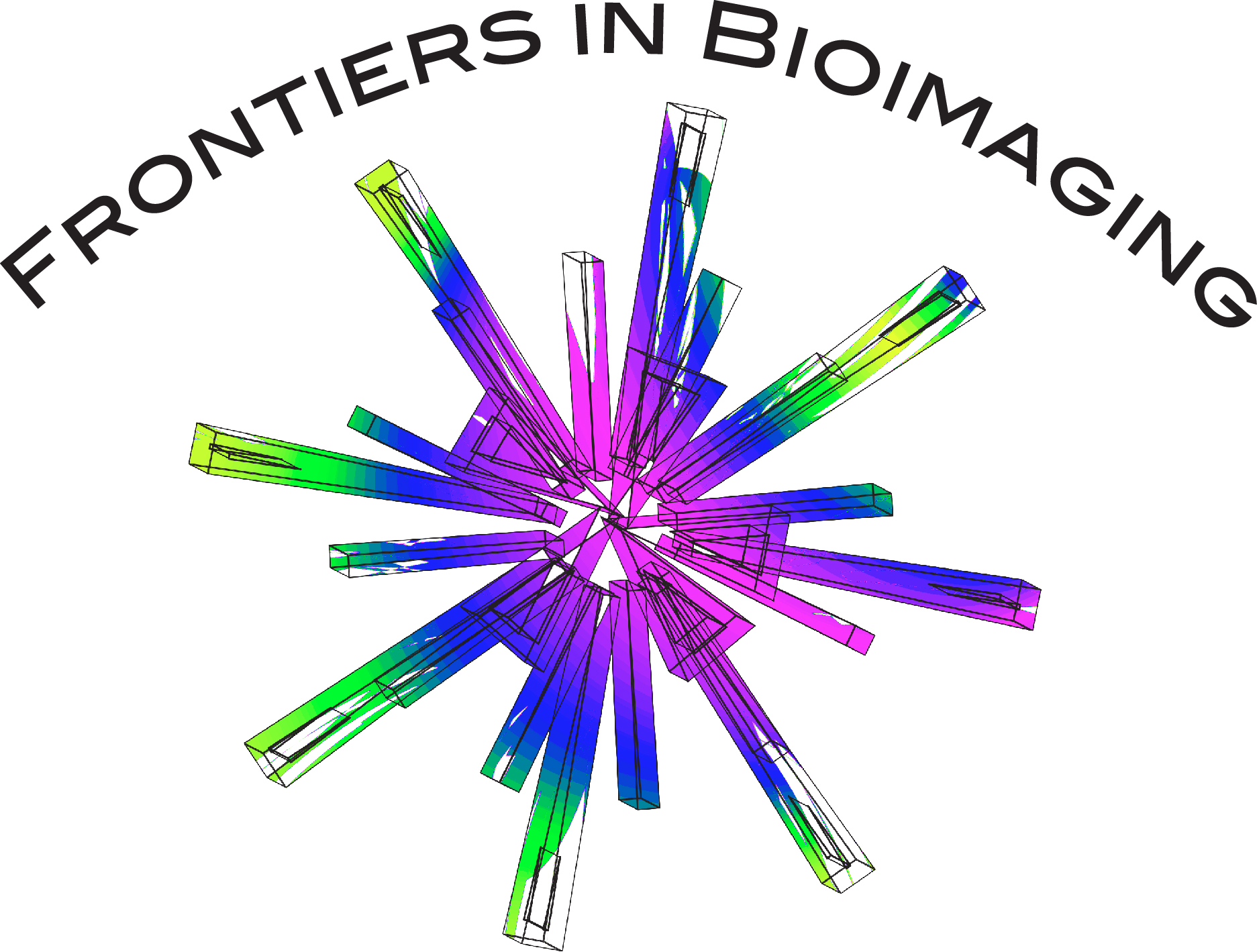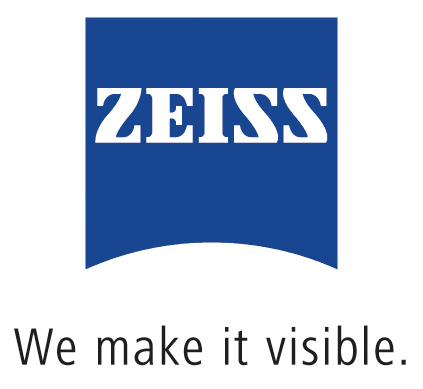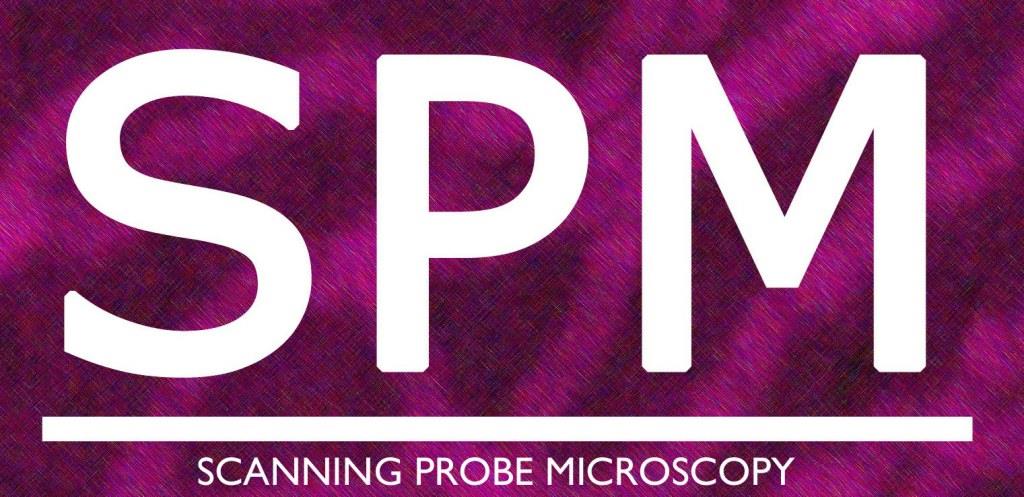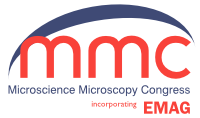Session Descriptions
Details on all sessions taking place at mmc2015 are below. View the timings for the mmc2015 conference.
Life Sciences Sessions
Scientific Organisers: Dr Emmanuel Reynaud and Prof John Girkin
Invited Speakers: Professor David Sampson and Dr James Swoger

Imaging “life” is inherently a four dimensional challenge where images have to be collected as 3D data sets at sub-cellular resolution, but in order to observe the correct processes taking place this has to be undertaken for extended time periods and potentially simultaneously with high temporal resolution. A number of methods have now been developed which enable extended time 4D images to be collected from intact and live samples of various sizes. This session will report on the latest application of these methods to a range of life sciences challenges and explore where the field may go next as the technology developments are applied to real world situations, with minimum perturbation to the sample.
Scientific Organisers: Prof Michelle Peckham and Dr Susan Cox
Invited Speakers: Prof Christian Eggeling and Prof Suliana Manley

Super-resolution light microscopy enables researchers to image samples in the light microscope with resolution than that achievable with a confocal or wide-field microscope. Recent developments include improvements in the speed of acquisition, tracking the trajectories of single molecules while imaging, high-throughput approaches, deeper tissue imaging, and the development of new probes. This session will cover new developments in two key areas in super-resolution light microscopy; Stimulated Emission Depletion (STED) imaging and Photo-activated localisation microscopy (PALM), and will also report on progress in super-resolution imaging with a focus on new developments and applications.
Scientific Organisers: Prof Wolfgang Langbein and Prof Clemens Kaminski
Invited Speakers: Dr Philipp Kukura and Dr Charles Camp

Label-free imaging techniques are attractive as they permit the study of matter without any chemical modification, thus avoiding artifacts often associated with labels such complex sample preparation, functional and steric interference, photo-damage and photo-toxicity. These problems are particularly pertinent when investigating biological systems and or in medical applications. The current session will focus on label free imaging techniques with coherent methods. Coherent reflection and phase imaging, using the linear dielectric function of the material, permits the quantitative structural analysis of material with low photo-damage, and in controlled environments can reach single molecule sensitivity. Coherent Raman microscopy, using the third-order non-linear optical response, enables non-invasive 3D imaging of the chemical composition in transparent materials such as living matter with high specificity and resolution using the molecular vibration fingerprints. This session will report on progress on these, and related, imaging technologies and applications, with a focus on better resolution, sensitivity, and speed.
Scientific Organisers: Dr Lucy Collinson and Dr Chris Guerin
Invited Speakers: Dr Chris Guerin, Dr Perrine Bomme and Dr Tobias Starborg

Over the last 80 years, electron microscopy (EM) has vastly increased our understanding of complex cellular structures at the nanoscale, but the inherent lack of volume information has been limiting. For many years scientists struggled to achieve three dimensional (3D) EM using specialist techniques (serial section TEM, freeze fracture) that required lengthy procedures and specialist expertise to obtain even a very small 3D dataset. Recently, focused ion beams and robotic ultramicrotomes combined with high resolution field emission SEMs have allowed microscopists to collect large volumes of 3D EM information and do so in an efficient manner. This session will present the current state of the technology and look to areas where volume EM can provide new insights into the important links between cell structures and their functions.
Scientific Organisers: Prof Rachel Errington and Prof Huw Summers
Invited Speaker: Dr Marc Vendrell and Professor Veronica Buckle
The demand for new and relevant fluorescent-based detection systems for biology and biotechnology is ongoing and ever evolving. This session aims to bring together speakers from different scientific disciplines in the physical and life sciences to present recent developments in probes and sensors. This session will focus on: (i) new developments that include labeling and detecting the dynamics and heterogeneity of sub-populations from cells to organelles; (ii) state-of-the-art imaging probes to visualise the organisation of chromatin and protein assemblies. Contributions and participation in this session are solicited from any area of research where probes and biophotonics readouts are used to inform on the biological system.
Scientific Organisers: Prof George Bou-Gharios and Dr Alex Sossick
Invited Speakers: Dr Rafael Edgardo Carazo Salas, Professor Jean-Christophe Olivo-Marin and Dr Bernard Siow
Digital images are increasingly presenting the end user with a major challenge in terms of quantifying, analysing and curating what are often vast data sets. Data sets in biology and medicine of terabyte+ are often condensed into a simple graph. From conventional microscopy to high content/high throughput clinical imaging require analysis of the vast data sets generated. In addition, data fusion from different modalities is giving us greater understanding of what was only a short time ago a two dimensional image.
However as such methods move from research to real-world applications it also becomes increasingly important to understand the robustness and accuracy of these approaches to enable meaningful data mining. This session will explore novel approaches that take bio imaging analysis into tangible applications.
Scientific Organisers: Dr Klemens Rottner and Prof Michael Sixt
Invited Speakers: Prof Dr Anna Akhmanova and Dr Laurent Blanchoin
A functional cytoskeleton is essential for multiple processes, including establishment and maintenance of cell shape, its dynamic change during motility as well as interactions with and development of proper responses to cellular microenvironments. The cytoskeleton comprises two major dynamic systems, actin filaments and microtubules.
Exciting recent research, frequently using molecular and cellular imaging technology, has elucidated the regulatory principles of these filament systems on the biochemical, cellular and organismic level. Our proposed invited speakers made outstanding contributions in this field and are prime examples of how diverse experimental approaches can be successfully combined to increase our understanding of actin turnover and microtubule-based processes.
This session is sponsored by:

Scientific Organisers: Dr Paul Verkade and Dr Peter Rosenthal
Invited Speakers: Dr Chris Russo
Rapid progress in methods for cryomicroscopy of frozen-hydrated specimens has created a burst of activity in the past year. New experimental and computational methods have resulted in near-atomic resolution structures for large macromolecular assemblies studied through single particle analysis and the lower molecular weight threshold for such studies has not been reached. Most important has been a new generation of electron detectors, however, new methods are likely to bring further progress. Equally exciting have been studies of large structures and systems by electron cryotomography of whole-mount as well as sectioned specimens. These approaches are providing remarkable results for structure in vivo and have connections to microscopy on other length scales. This session will include new, state-of-the-art biological results as well as new methodology.
Scientific Organisers: Dr Simon Ameer-Beg, Prof Rory Duncan and Prof Gail McConnell
Invited Speakers: Dr Sandrine Leveque-Fort and Dr Steven Vogel
Fluorescence lifetime spectroscopy is a powerful technique in physics, chemistry and biology. Specifically, the modification of the fluorescent excited state of molecules can inform on the nanoscale environment. In the biological context, fluorescence lifetime is used as a surrogate for molecular association (FRET), as a measurement of analyte concentration (Ca2+, O2, etc) or environmental conditions (pH, Viscosity, etc) making it the technique of choice for functional imaging of many kinds. Contributions to this session are solicited from any area of research where FLIM or lifetime spectroscopy is used to inform on the molecular environment.
Scientific Organisers: Dr Fred Wouters and Dr Alessandro Esposito
Invited Speakers: Dr Simon Ameer-Beg
Biochemical tools provide invaluable information on how cells maintain their functional states and commit to cellular decisions. With their low-invasiveness and high sensitivity, biochemical imaging techniques offer the additional advantage of mapping biochemical pathways in space and time and the unique opportunity to characterize the heterogeneity intrinsic of biological systems.
This session is dedicated to the report of novel developments and applications of biochemical imaging tools (including new techniques, fluorophores and optogenetics) with a focus on quantitative, high-throughput, fast or multiplexed approaches.
Scientific Organisers: Dr Mark Coles and Dr Maddy Parsons
Invited Speakers: Prof Max Krummel, Prof Michael Sixt and Prof Dan Davis
The immune system is a highly sophisticated and dynamic group of cells and organs that constantly have to adapt to maintain healthy tissues in the body. Traditionally, the FACS machine has been the stalwart fluorescence workhorse of the immunology community. However, recent advances in fluorescence microscopy techniques have provided fantastic platforms to enable researchers to delve into the behaviour of live immune cells, study population traffic, homing and signaling both in vitro and in vivo pushing the limits of sensitivity, speed and resolution of imaging systems. This session will showcase some of the recent work from pioneers in the field of immune cell imaging as well as new and emerging microscopy tools, approaches and data from other research teams in the field highlighting applications of super resolution imaging and 4D in vivo multiphoton imaging.
This session is sponsored by:

Scientific Organisers: Dr Claire Wells and Dr Theresa Ward
Invited Speakers: Dr Fernando Calvo and Dr Adam Hurlstone
Imaging tumour cells in fixed samples and living tissue is transforming our view of cancer. This session aims to highlight the latest developments at high resolution and in vivo imaging with an emphasis on highlighting advances in the field. Contributions to this symposium are solicited from any area of research where imaging techniques are being applied to the study of cancer biology.
Scientific Organisers: Dr Pippa Hawes and Dr Spencer Shorte
Invited Speakers: Dr Marek Cyrklaff, Dr David Bhella
RMS Life Sciences Medal Winner Dr John Briggs (EMBL) will be speaking during this session.
Recent advances in imaging technology have given researchers the freedom to investigate host-pathogen interactions in novel and imaginative ways. The development of new reagents for the study of cell biology has produced exciting results and cemented microscopy as one of the most important techniques in the study of pathogens, both in vitro and in vivo. The purpose of this symposium is to showcase state-of-the-art microscopical techniques currently being used in the study of pathogen structure, entry, replication, egress and spread.
Scientific Organisers: Dr Sebastian Muenck and Dr Steve Briddon
Invited Speakers: Prof Paul Wiseman and Dr Malte Wachsmuth
Cellular structure and organisation can be better understood by measuring the number and rate of movement of small molecules, fluorescent proteins, nucleic acids or lipids within cellular compartments. Fluctuation analysis is one approach to this and allows us to determine, within small areas of the cell, the rates and stoichiometry of molecular interactions and even to quantify drug delivery. Fluctuation based microscopy techniques such, fluorescence correlation spectroscopy (FCS) and image based correlation techniques (IC(C)S), and other related techniques including single particle tracking (SPT), are redefining quantitative biology in this way and by providing a detailed quantitative analysis of biomarkers in living cells. This session welcomes studies using advanced or novel techniques in this area, particularly those targeted to living cells.
This session is sponsored by:

Physical Sciences Sessions
Scientific Organiser: Dr Adriana Klyszejko
Invited Speakers: Dr Sergei Kalinin and Dr Simon Connell
Scanning Probe Microscopy (SPM) has been successfully used to study biological system for many years. Recent developments in SPM and Atomic Force Microscopy (AFM) technology open new opportunities for biological applications. Variety of the microscope operation modes enables observation of fragile molecules and cells under physiological conditions. SPM techniques are applied in studies ranging from single molecules to cells and tissues. They include imaging using different modes, single molecule and single cells force spectroscopy. We can address questions of folding and assembly of molecular complexes, elasticity of cells and tissues, observe how cells generate force and many more.

Scientific Organisers: Dr Brian Rodriguez and Dr Amit Kumar
Invited Speakers: Prof Seungbum Hong and Dr Stefan Weber

Recent advances in Scanning Probe Microscopy (SPM) based techniques have enabled spatially-resolved quantitative measurements of functional materials properties at the nanoscale. The functionalities probed range from local electrochemical reactivity and bias-induced phase transitions to electromechancial coupling and transport, and can be measured using scanning and spectroscopic modes. SPM is providing further insight into fundamental materials properties in a wide range of materials systems, including photovoltaics, biopolymers, energy materials, and ferroics. The aim of this session is to bring together researchers interested in developing and applying functional imaging SPM modes, thereby pushing the limits of the techniques and advancing our understanding of local functionalities of materials.
Scientific Organiser: Dr Neil Thomson
Invited Speakers: Prof Philip Moriarty and Dr Niko Pavlicek

This session of the annual UK SPM meeting is dedicated to advances in high resolution imaging with scanning probe microscopy. The fruition of more than 25 years of research is now yielding reproducible imaging of molecular systems down to the atomic scale. The session will include examples from all types of SPM but will mainly concentrate on recent advances in applications of AFM and STM to optimising resolution and new information gained from atomic and molecular systems. The theme is to include recent research towards optimising resolution in any SPM technique or application. This may include operation in various environments, combined modes, multi-frequency methods, nanoscale compositional mapping, force reconstruction methods, improved probe fabrication or characterisation and modelling of nanoscale physical interactions.
Scientific Organiser: Dr Jamie Hobbs Invited Speakers: Dr Pierre-Emmanuel Milhiet and Dr Iwan Schaap
Invited Speakers: Dr Pierre-Emmanuel Milhiet and Dr Iwan Schaap
This session includes the use and adaptation of atomic force microscopy to work in parallel with other analysis and imaging techniques so as to obtain a richer set of data describing the sample or system of interest than is available with one technique only
Scientific Organisers: Mr Jean-Yves Mugnier and Dr Chris Parmenter
Invited Speakers: Dr Pieter Verboven, Prof Alan Mackie and Dr Niklas Loren
The second edition of Focus on Food meeting will take place at the Microscience Microscopy Congress in Manchester 2015. The meeting is based on food imaging, Structure and functionality. This meeting aims to bring together a community of food researchers and people working in the food industry, who are interested in the impact of structure in food products. We will capture the importance of linking processing conditions and product properties with the characterization of microstructure, identifying micro-flora and ingredients, and instrumentation for new and existing exploration in this field. Invited speakers will come from both industry and academia, give insights into some approaches that have been developed over time and the exploitation of new techniques. The mmc2015 exhibition in the main hall will give everyone a great opportunity to explore the applied techniques that have been developed specifically in this area.
Scientific Organisers: Prof Grace Burke and Dr Jon Hinks
Invited Speakers: Dr Erwan Oliviero and Dr Simon Dumbill
Understanding the behaviour of materials in nuclear environments is essential for the safe operation and lifetime extension of current fission plants as well as the development of new materials for use in future generations of fission and fusion reactors. Radiation damage phenomena at the atomistic and microstructural scales determine the performance of reactor components. Thus microscopy techniques are invaluable tools to give insights into the structure and behaviour of materials under the combined effects of neutron irradiation and elevated temperatures. Talks are invited on original research dealing with irradiation effects in structural materials and waste storage forms.
Scientific Organisers: Prof John Rodenburg and Prof Christoph Rau
Invited Speakers: Dr Manuel Guizar-Sicairos and Prof Dag Werner Breiby
The session focuses on techniques and applications in X-ray imaging. High spatial resolution is achieved using X-ray optics or high-resolution detectors. More recently other experimental methods have emerged, exploiting the coherent radiation provided by modern X-ray sources such as synchrotrons. These coherent diffraction imaging techniques, in particular ptychography, promise to achieve ultimate wavelength resolution. Such methods are being continuously developed, but are now sufficiently mature for routine scientific applications, as opposed to technique improvement per se. The session is designed to bring together state-or-the-art developments and recent applications of these techniques.
Scientific Organisers: Dr Asa Barber and Dr Thomas Walther
Invited Speakers: Prof Carol Hirschmugl and Dr Paul Edwards
This session will deal with recent developments in both hardware (instrumentation) and software (techniques) to improve microscopy data acquisition and data analysis. It is intended to cover the whole range of wavelengths available, from pm (electrons) over nm (X-rays) to µm (infrared radiation), with the intention of bridging the gap between different disciplines and enabling synergistic cross-fertilisation of ideas for data acquisition and processing. As examples, the invited talks will cover hyperspectral cathodoluminescence imaging of semiconductors in a scanning electron microscope (Paul Edwards, University of Strathclyde, Glasgow, UK) and 3D FT-IR imaging (Carol Hirschmugl, University of Wisconsin-Milwaukee, USA).
EMAG2015 completes the mmc2015 physical sciences sessions and their scientific programme is now available to view.


